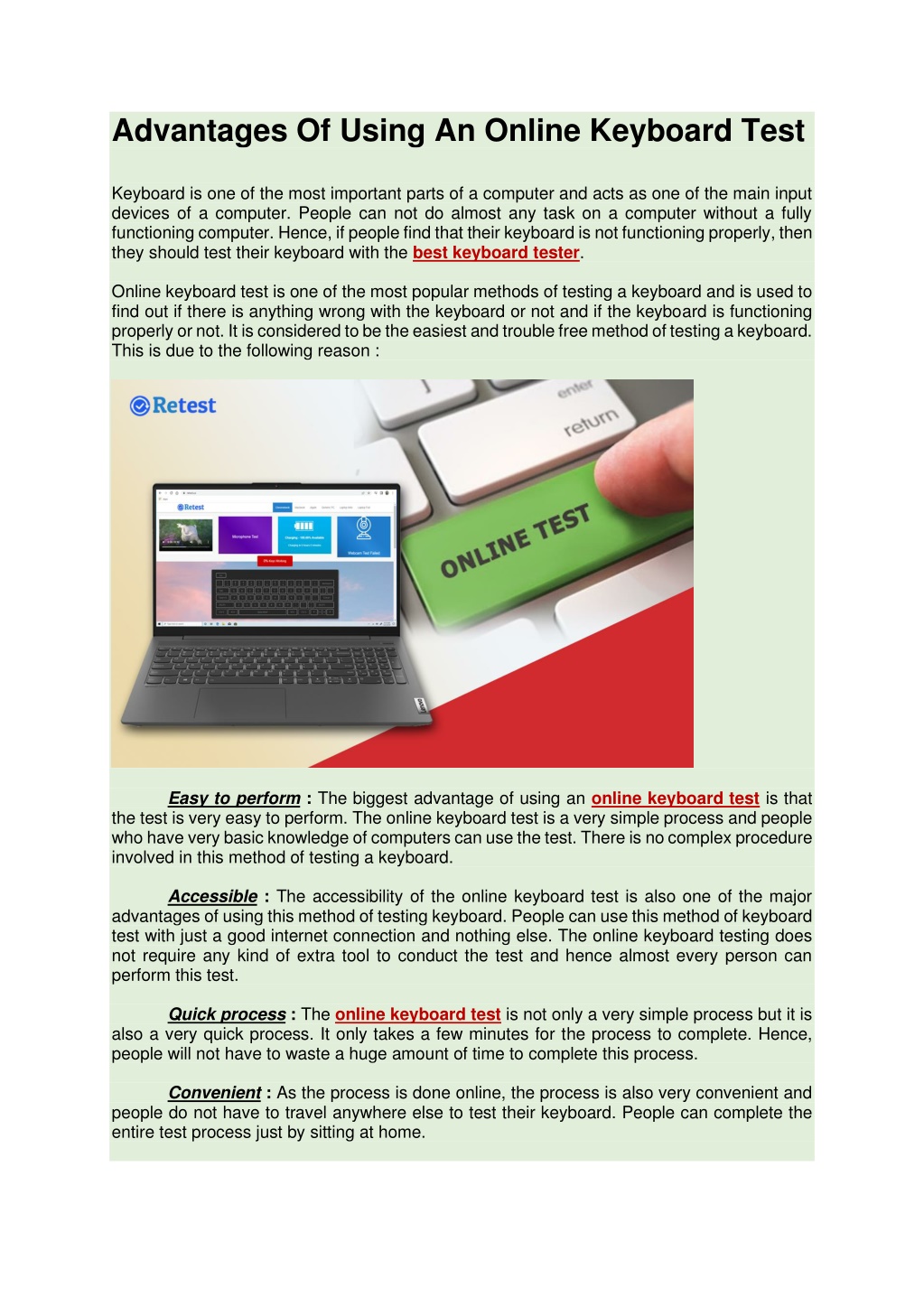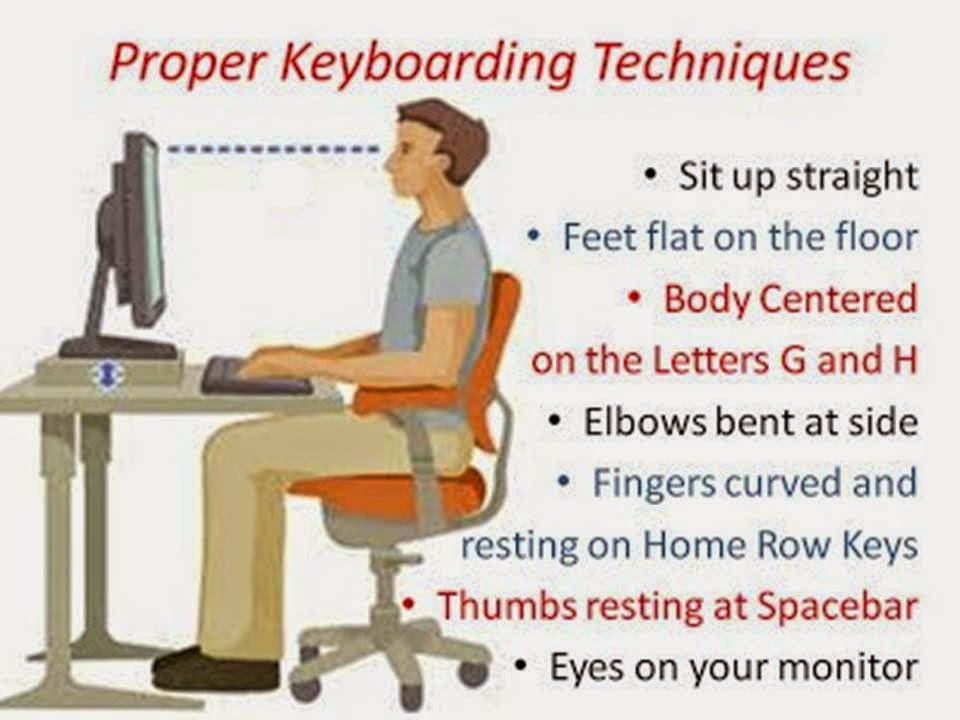Navigating the Keyboard: Understanding the Importance of Keyboard Tests in Employment
Related Articles: Navigating the Keyboard: Understanding the Importance of Keyboard Tests in Employment
Introduction
With great pleasure, we will explore the intriguing topic related to Navigating the Keyboard: Understanding the Importance of Keyboard Tests in Employment. Let’s weave interesting information and offer fresh perspectives to the readers.
Table of Content
Navigating the Keyboard: Understanding the Importance of Keyboard Tests in Employment

In today’s digital world, proficiency in keyboard skills is no longer a mere advantage, but a fundamental requirement for many roles. From data entry to writing, programming to graphic design, the ability to navigate a keyboard with speed and accuracy is crucial for success. Consequently, keyboard tests have become an integral part of the employment process, serving as a reliable gauge of an applicant’s potential to excel in roles that necessitate significant computer interaction.
Understanding the Purpose of Keyboard Tests
Keyboard tests are designed to evaluate an applicant’s typing speed and accuracy. These assessments typically involve a timed exercise where candidates are required to type a specific passage or series of words. The results are then analyzed to determine the candidate’s words per minute (WPM) and accuracy rate, providing employers with quantifiable data about their typing abilities.
The Significance of Keyboard Tests for Employers
The inclusion of keyboard tests in the employment process offers numerous benefits for employers:
- Identifying Qualified Candidates: Keyboard tests act as an efficient screening tool, enabling employers to quickly identify candidates who possess the necessary typing skills for the role. This saves time and resources, allowing employers to focus on the most promising applicants.
- Predicting Job Performance: Studies have consistently shown a strong correlation between keyboard proficiency and job performance in roles requiring extensive computer use. Higher typing speeds and accuracy rates are often associated with increased productivity and efficiency, ultimately benefiting the organization.
- Ensuring Workplace Efficiency: Employees with strong keyboard skills are less likely to experience frustration or delays when completing tasks requiring data entry or document creation. This translates to smoother workflow and improved overall productivity within the organization.
- Reducing Errors and Improving Accuracy: Typing errors can lead to significant delays, rework, and even financial losses. Keyboard tests help identify candidates who are less prone to errors, contributing to a more reliable and efficient workplace.
Types of Keyboard Tests
A variety of keyboard tests are available, each with its own format and focus:
- Standard Typing Tests: These tests typically involve typing a specific passage of text within a set time limit. The focus is on evaluating both speed and accuracy.
- Word-Based Tests: These tests present individual words or phrases that need to be typed in sequence. This format is often used to assess accuracy and familiarity with common words and phrases.
- Number-Based Tests: These tests involve typing a series of numbers, often in a specific order or pattern. This format is particularly relevant for roles requiring extensive data entry or numerical manipulation.
- Specialized Tests: Some employers utilize specialized keyboard tests tailored to the specific requirements of the role. For example, a programmer might be tested on their ability to type code efficiently and accurately.
Frequently Asked Questions (FAQs) about Keyboard Tests
Q1: What is the average typing speed for a keyboard test?
A: The average typing speed varies depending on the test format and the specific role. However, a generally acceptable range is between 40 and 60 WPM with a high level of accuracy.
Q2: How can I prepare for a keyboard test?
A: Preparation involves practicing regularly to improve typing speed and accuracy. Utilize online typing tutors or dedicated software programs to enhance your skills.
Q3: Are keyboard tests standardized?
A: While some standardized keyboard tests exist, employers often utilize their own customized assessments tailored to the specific requirements of the role.
Q4: What if I have a disability that affects my typing speed?
A: Employers are obligated to provide reasonable accommodations for individuals with disabilities. If you have a disability that impacts your typing ability, discuss your needs with the employer during the application process.
Tips for Success in Keyboard Tests
- Practice Regularly: Consistent practice is key to improving typing speed and accuracy. Dedicate time each day to typing exercises.
- Focus on Accuracy: While speed is important, accuracy is equally crucial. Aim for minimal errors while maintaining a reasonable typing speed.
- Use Proper Finger Placement: Familiarize yourself with the home row keys and practice proper finger placement for each key.
- Avoid Looking at the Keyboard: Train yourself to type without looking at the keyboard. This will significantly improve your speed and efficiency.
- Maintain a Comfortable Posture: Ensure you maintain a comfortable posture while typing to avoid strain or discomfort.
- Utilize Online Typing Tutors: Numerous online typing tutors are available, offering interactive exercises and feedback to help you improve your skills.
Conclusion
Keyboard tests have become an essential component of the modern hiring process, providing employers with valuable insights into an applicant’s ability to perform tasks requiring computer proficiency. By understanding the purpose and significance of these assessments, candidates can prepare effectively and demonstrate their typing skills to secure their desired positions. As the digital landscape continues to evolve, mastering keyboard skills will remain a crucial advantage in the competitive job market.








Closure
Thus, we hope this article has provided valuable insights into Navigating the Keyboard: Understanding the Importance of Keyboard Tests in Employment. We hope you find this article informative and beneficial. See you in our next article!
